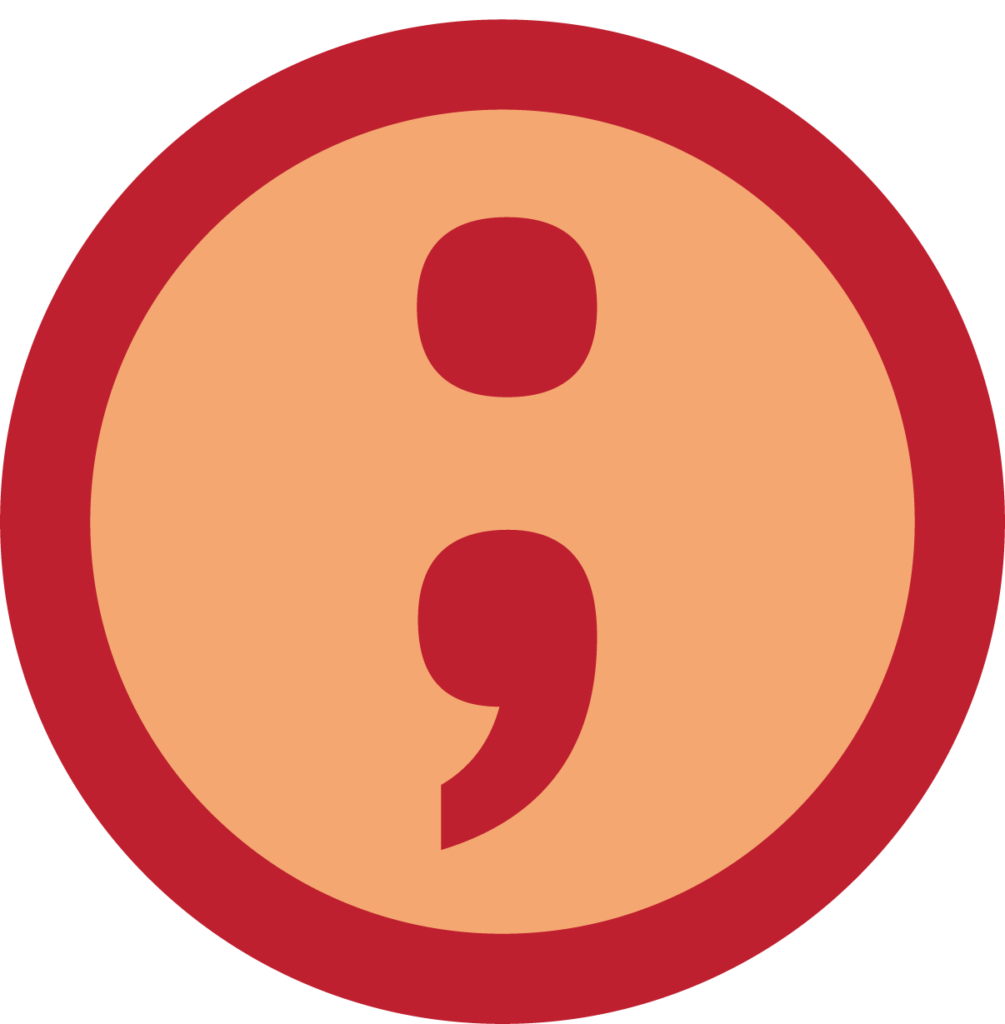 The semicolon is one of the most misunderstood and misused punctuation marks; in fact, it is often mistaken for the colon (which we’ll discuss next). However, these two punctuation marks are not interchangeable. A semicolon connects two complete ideas (a complete idea has a subject and a verb) that are connected to each other. Look at this sentence for example:
The semicolon is one of the most misunderstood and misused punctuation marks; in fact, it is often mistaken for the colon (which we’ll discuss next). However, these two punctuation marks are not interchangeable. A semicolon connects two complete ideas (a complete idea has a subject and a verb) that are connected to each other. Look at this sentence for example:
Anika’s statue is presently displayed in the center of the exhibit; this location makes it a focal point and allows it to direct the flow of visitors to the museum.
The first idea tells us where Anika’s statue is, and the second idea tells us more about the location and it’s importance. Each of these ideas could be its own sentence, but by using a semicolon, the author is telling the reader that the two ideas are connected. Often, you may find yourself putting a comma in the place of the semicolon; this is incorrect. Using a comma here would create a run-on sentence (we’ll discuss those more in Text: Run-on Sentences). Remember: a comma can join a complete idea to other items while a semicolon needs a complete idea on either side.
Practice
Do the following sentences need a comma or a semicolon?
- Kieran never throws anything away __ he’s convinced he’ll need these things someday.
- Because I left my keys at my apartment __ I had to stay on campus and wait for my roommate.
- Zebras are the most popular animals at my local zoo __ however, elephants are my favorite animal.
